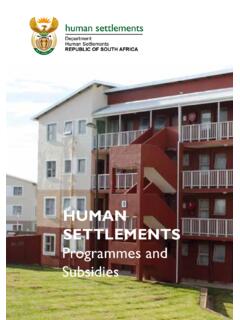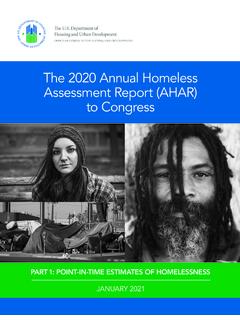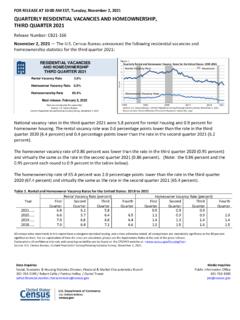Transcription of The National Housing Code - Department of Human …
1 PART 3 Social Housing Policy The National Housing Code SOCIAL & RENTAL INTERVENTIONS. Community Residential Units Institutional Subsidies Social Housing Policy Subsidy Quantum - Social & Rental Interventions Volume 6. SOCIAL AND RENTAL INTERVENTIONS: SOCIAL Housing POLICY | PART 3 (OF THE National Housing CODE) | 2009. TABLE OF CONTENTS. PREAMBLE .. 5. 1 POLICY 11. 11. SPATIAL .. 11. 12. SOCIAL .. 12. FUNCTIONING Housing SECTOR .. 13. 2 DEFINITION OF SOCIAL Housing .. 17. 3 GUIDING PRINCIPLES FOR SOCIAL 23. 4 THE TARGET MARKET OF SOCIAL Housing .. 29. TYPICAL HOUSEHOLDS RENTING IN SA: THE DEMAND. FOR RENTAL 30. DEEPENING THE REACH OF SOCIAL Housing .. 31. SHIFTING FROM INCOME-BASED ELIGIBILITY TESTING TO. GREATER 32. SHIFTING FROM A SUBSIDY-BAND APPROACH TO A PROJECT- BASED 33. ESCALATING RENTALS .. 34. AN UPPER INCOME LIMIT FOR ACCESS TO SUBSIDISED UNITS.
2 34. 5 BRINGING GREATER QUALITY INTO Housing ENVIRONMENTS .. 39. 6 GEARING TO 41. STRATEGY FOR GEARING UP CAPACITY .. 41. 7 LEGISLATIVE, INSTITUTIONAL AND REGULATORY 45. LEGISLATIVE 45. 1. SOCIAL AND RENTAL INTERVENTIONS: SOCIAL Housing POLICY | PART 3 (OF THE National Housing CODE) | 2009. INSTITUTIONAL ARRANGEMENTS FOR THE SECTOR .. 46. LEADERSHIP .. 46. FUNDING .. 49. 51. REGULATION .. 52. 53. REGULATION .. 56. ACCREDITATION AND THE ESTABLISHMENT OF. A SOCIAL Housing 57. ACCREDITATION OF 57. PERFORMANCE MONITORING .. 59. INCENTIVES AND SANCTIONS .. 60. ACCREDITED 60. THE INSTITUTIONAL 60. THE PROJECT COMPONENT .. 61. INCENTIVES AND SANCTIONS .. 61. 8 CAPACITY BUILDING IN THE SOCIAL Housing SECTOR .. 65. PLACING THE DEVELOPMENT OF VIABLE PROJECTS AT THE. CENTRE OF THE CAPACITY BUILDING 65. TYPES OF CAPACITY BUILDING INTERVENTIONS .. 66. SHI CAPACITY-BUILDING 66.
3 CAPACITY BUILDING FRAMEWORK AND PROGRAMME FOR. THE 68. CAPACITY BUILDING OF OTHER SUPPORT 68. CO-ORDINATING CAPACITY BUILDING INITIATIVES .. 68. 9 FINANCE FOR SOCIAL Housing .. 73. OVERALL APPROACH .. 73. CAPITAL GRANTS FOR SOCIAL Housing 75. FINDING A BALANCE BETWEEN FLEXIBILITY AND TRANSPARENCY .. 76. SPLITTING THE CAPITAL GRANT INTO TWO 77. 2. SOCIAL AND RENTAL INTERVENTIONS: SOCIAL Housing POLICY | PART 3 (OF THE National Housing CODE) | 2009. SUBSIDY EFFICIENCY MEASURES .. 78. FISCAL IMPLICATIONS .. 79. DEBT 79. TAX INCENTIVES FOR SHIS .. 79. RISK MITIGATION 80. RISK MITIGATION REQUIREMENTS .. 80. INSURANCE COVER .. 81. COMPLEMENTARY POLICY INITIATIVES .. 81. 10 ALIGNMENT .. 85. 11 POLICY IMPLEMENTATION: A ROLL-OUT STRATEGY .. 87. ANNEXURE A - LEGISLATIVE ENVIRONMENT AFFECTING SOCIAL Housing . SECTOR .. 89. 3. SOCIAL AND RENTAL INTERVENTIONS: SOCIAL Housing POLICY | PART 3 (OF THE National Housing CODE) | 2009.
4 4. SOCIAL AND RENTAL INTERVENTIONS: SOCIAL Housing POLICY | PART 3 (OF THE National Housing CODE) | 2009. PREAMBLE. Social Housing development in the context of the broader Housing development programme of the Government. In his opening address to parliament in 2001, the President announced the Government's commitment towards the regeneration of inner cities in the country, the development of well located land and the intention to broaden the current Housing assistance programmes to accommodate higher density development and to address the increasing demand for rental Housing in urban areas. Furthermore, in the State of the Nation address in May 2004, the President referred to a comprehensive ( Housing ) programme dealing with Human settlement and social infrastructure, including rental- Housing stock for the poor . He also referred to the need to address the broader question of spatial settlement patterns and implications of this in our efforts to build a non-racial society.
5 Subsequently, in September 2004 the National Department of Housing released its Comprehensive Plan for the Development of Sustainable Human Settlements. Entitled Breaking New Ground', this document reinforces the vision of the Department of Housing to promote the achievement of a non-racial, integrated society through the development of sustainable Human settlements and quality Housing . While the 2004 plan notes the continued relevance of the state Housing programme introduced in 1994, it flags the need to redirect and enhance various aspects of policy, and commits the Department to meeting a range of specific objectives. Amongst others, these objectives include: Utilising Housing as an instrument for the development of sustainable Human settlements, in support of spatial restructuring;. Combating crime, promoting social cohesion and improving quality of life for the poor.
6 Leveraging growth in the economy; and Utilising the provision of Housing as a major job creation strategy. The plan notes the shift in emphasis from the provision of Housing to the creation of sustainable Human settlements. This includes the promotion of more efficient cities, towns and regions. In support of spatial restructuring, the plan highlights the need to integrate previously excluded groups into the city and the benefits it offers . The plan flags the need to promote densification, including Housing products which provide adequate shelter to households whilst simultaneously enhancing flexibility and mobility . 5. SOCIAL AND RENTAL INTERVENTIONS: SOCIAL Housing POLICY | PART 3 (OF THE National Housing CODE) | 2009. The Social Housing Policy described in this document, while comprising only one aspect of the overall Housing strategy, is a key component of meeting these objectives.
7 Social Housing has shown that it is able to significantly contribute to urban regeneration and to urban efficiency. It can meet objectives of good location, integration, and viability. The sector can facilitate local economic development through supporting local economies. It makes a financial contribution to local authorities by way of regular payments for rates and services. Social Housing has been shown to promote the effective and efficient management of rental and/or collective forms of accommodation (with emphasis on long term management and maintenance). This contributes to social integration, social stabilisation and crime reduction. Therefore social Housing is not only able to contribute to the Department 's objectives noted above, but also to the government's macro objectives of promoting citizenship, democracy and good governance. Social Housing institutions and projects have been developed in South Africa since 1997 with the introduction of the institutional subsidy mechanism.
8 To date approximately 60 social Housing institutions (SHIs) have been formed delivering approximately 30,332 units throughout the country. The SHIs have developed social Housing stock using the institutional subsidy together with loan funding from the NHFC and have relied on donor funding and local authority grant funding to cover institutional set-up and operational costs. This has resulted in a unsustainable situation where the majority of the SHIs have developed and currently depend on donor funding. The delivery models have been diverse and vary from pure rental, to co-operative Housing , instalment sale options, and hybrids of these delivery models. Recent reviews of the performance of the sector (the Job Summit Pilot Project Mid Term Review and the EU Mid Term Review) have shown mixed results. Key conclusions of these reviews are pertinent to the development of the policy framework for the sector.
9 The reviews of the sector note the following: Scale is hard to achieve in the sector within the current context, given that the capacity and experience base is limited and needs to be consolidated and properly reinforced if scale is an objective. The overall funding framework and the current institutional subsidy is not tailored to the production of viable medium to higher density Housing products and projects, and has no proper provisions for the operating and management costs of the Housing stock. Financial pressures are immense and the parameters of the current subsidy approach are too tight to allow the provision of social Housing too far down- market. In most cases SHIs display serious financial distress. 6. SOCIAL AND RENTAL INTERVENTIONS: SOCIAL Housing POLICY | PART 3 (OF THE National Housing CODE) | 2009. Capacity building initiatives for the sector have largely centred on education and training initiatives and the pre-establishment phase of the SHI.
10 This has resulted in a focus on the establishment of SHIs with limited emphasis on the project packaging, project implementation, and project operations skills needed to run viable institutions. A lack of suitable governance and management capacity has been evident within some of the SHIs, yet there has been no agency with the necessary authority to intervene and correct the situation. The sector has been moving out of the low income market into the middle income markets due to the financial pressures and subsidy constraints and therefore competing with private sector players causing potential market distortions. Moreover it is fair to say that social Housing currently operates in a policy vacuum. This Social Housing Policy document endeavours to fill this policy vacuum and to address the key challenges of the sector. The policy framework presented is an aggressive and bold indication of government's commitment to making the social Housing sector work because of the benefits that it brings to the country.













